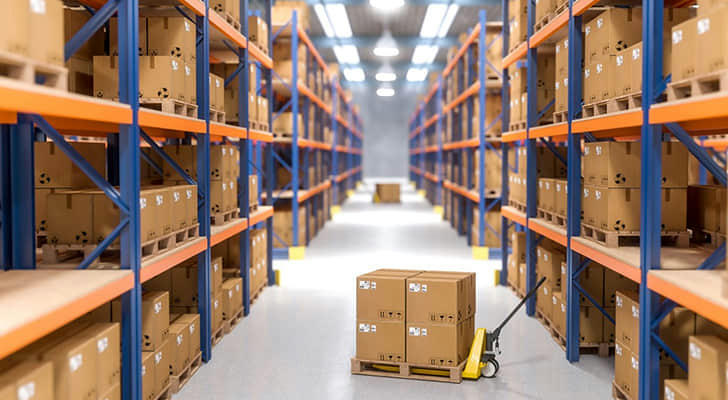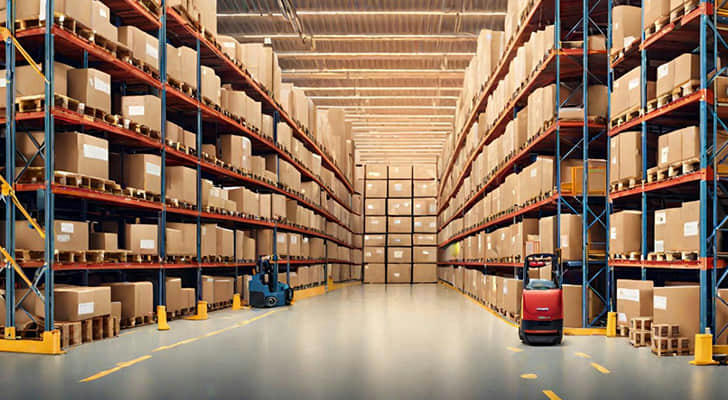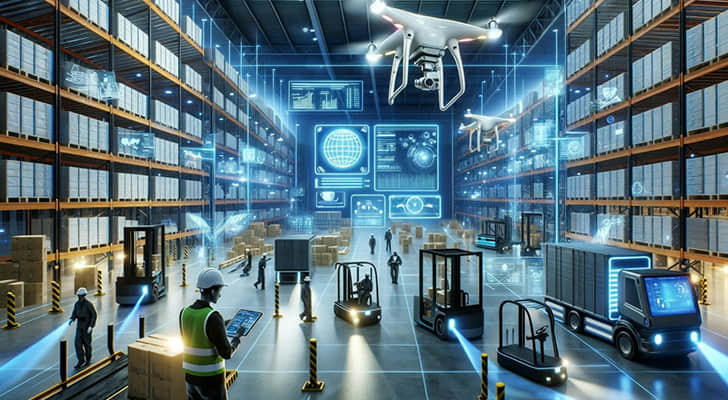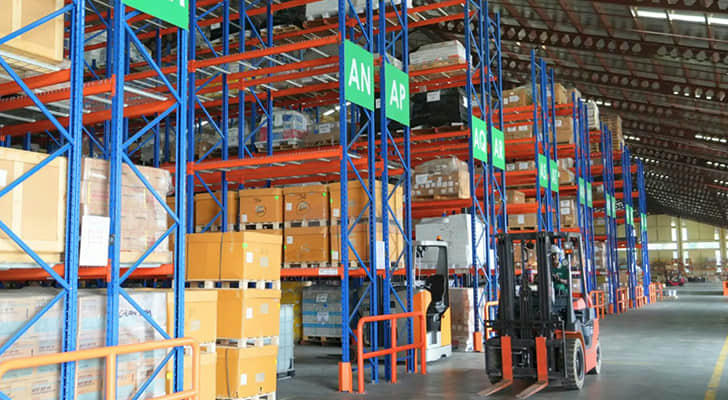Mobile Warehousing: A Modern Storage and Logistics Solution

As a modern warehousing and logistics solution, mobile warehouses achieve efficient storage and rapid movement of goods by integrating information technology and automated equipment.
I. Introduction
The rapid evolution of global commerce has placed immense pressure on traditional warehouse management systems. Traditional warehouses, often relying on manual labor and outdated technology, face numerous challenges such as inefficient space utilization, high operational costs, and a lack of flexibility in responding to market demands.
To address these issues, the concept of mobile warehousing has emerged as a transformative solution in modern supply chains. By integrating advanced information technology with automated equipment, mobile warehouses facilitate the efficient storage and quick movement of goods, offering businesses the flexibility they need in a fast-paced market.
This article will delve into the core technologies of mobile warehousing, explore its advantages, and highlight its applications in various industries, along with a look at future trends.

II. Analysis of Mobile Warehouse Technology
1. Automated Storage and Retrieval Systems (AS/RS)
Mobile warehouses heavily rely on Automated Storage and Retrieval Systems (AS/RS), which combine vertical racking with automated machines to retrieve and store goods efficiently. These systems maximize warehouse space by utilizing high shelves and reduce the need for human labor. The system operates based on two key technologies:
High-density storage racks allow for vertical storage, optimizing space.
Automated machines, such as robots or shuttles, handle the placement and retrieval of goods without human intervention.
These systems also incorporate navigation and positioning technologies like laser-guided vehicles or magnetic strip-based systems, ensuring precise and safe movement of goods.
2. Wireless Communication and Internet of Things (IoT) Technology
Mobile warehousing depends heavily on real-time data communication facilitated by IoT technology. These systems connect various warehouse devices to allow seamless data exchange and coordination.
RFID and barcode tracking systems monitor the exact location of goods in real time, enhancing inventory accuracy and visibility.
Warehouse Management Systems (WMS) continuously update stock levels, incoming orders, and shipping statuses to optimize operations.
Cloud platforms enable data exchange across multiple locations, providing centralized control of warehousing operations.
3. Artificial Intelligence and Machine Learning Applications
AI and machine learning play a vital role in mobile warehousing, making operations smarter and more adaptive.
Predictive analytics and demand forecasting allow warehouses to anticipate inventory needs, ensuring stock levels align with customer demand.
Automated scheduling and route optimization help streamline the movement of goods within the warehouse, reducing delays.
Anomaly detection through AI-driven systems flags any operational issues, such as machinery malfunctions or inventory discrepancies, allowing for quick corrective action.

III. Advantages of Mobile Warehousing
1. Increased Space Utilization
Mobile warehousing optimizes space by leveraging vertical storage and dynamic layouts. This is especially important in densely populated urban areas where real estate is costly.
High-density shelving systems allow businesses to store more inventory in the same footprint.
Warehouses can dynamically adjust their layout based on changing inventory needs, adapting to fluctuations in demand.
2. Improved Operational Efficiency and Accuracy
Automation significantly speeds up the process of storing and retrieving goods, resulting in quicker order fulfillment and reduced downtime.
Automated systems reduce human errors that can occur during manual picking, boosting inventory accuracy.
Faster storage and retrieval systems shorten the overall operation cycle, improving throughput.
3. Cost Savings and Energy Efficiency
Mobile warehouses help businesses save on operational costs by reducing labor reliance and promoting efficient use of resources.
Automation decreases the need for a large manual workforce, cutting labor costs.
The integration of green energy solutions and energy-saving designs reduces the warehouse’s carbon footprint, contributing to sustainability goals.
4. Flexibility and Scalability
Mobile warehouses are built to grow alongside businesses, making them ideal for industries experiencing rapid growth or seasonal demand spikes.
Systems can be easily upgraded or expanded as operational needs change.
Mobile warehouses quickly adapt to shifts in market demand, ensuring continuous, uninterrupted service.
IV. Industry Case Studies
1. E-commerce Logistics
During high-volume events like Black Friday or China’s Singles’ Day (Double 11), mobile warehouses have proven invaluable. E-commerce giants use automated systems to handle the surge in orders, enabling faster processing and fulfillment.
2. Manufacturing
In the manufacturing sector, mobile warehouses ensure efficient parts flow by delivering the right components at the right time to production lines. This improves the overall efficiency of assembly processes.
3. Pharmaceutical and Healthcare
Precision and traceability are crucial in the pharmaceutical industry. Mobile warehouses, with their RFID systems and real-time monitoring, ensure that drugs and medical equipment are stored and retrieved accurately, meeting stringent regulatory requirements.
4. Retail Industry
Mobile warehousing supports Online-to-Offline (O2O) models by enabling quick inventory turnover and speedy delivery. This allows retailers to meet customers’ expectations for fast and reliable service.
V. Challenges and Solutions
1. High Initial Investment
The upfront cost of implementing a mobile warehouse is substantial. This includes investment in automation, IT infrastructure, and training. However, companies can justify this cost through long-term savings in labor, space, and operational efficiency.
2. Technical and Training Requirements
The complexity of mobile warehouse systems requires specialized training for operators and maintenance staff. Ongoing training programs and partnerships with technology providers can mitigate this challenge.
3. System Stability and Security
As these warehouses rely on interconnected systems, any downtime or cyberattack could disrupt operations. To counter this, companies should implement strong cybersecurity measures and maintain backup systems to ensure smooth, continuous operation.

VI. Future Trends and Outlook
1. Deeper Integration of AI and Big Data
AI will continue to evolve in mobile warehousing, offering more sophisticated predictive capabilities and autonomous decision-making systems. Big data analytics will further refine inventory management, making operations more efficient.
2. Sustainable and Green Warehousing
As environmental concerns grow, businesses will increasingly adopt energy-efficient technologies and green building designs in their mobile warehouses. Solar power, smart lighting, and energy recovery systems are expected to become standard.
3. Human-Machine Collaboration
While automation will take over routine tasks, human workers will focus on higher-level decision-making. Cobots (collaborative robots) working alongside humans will improve productivity and safety.
4. 5G and IoT Expansion
With the rollout of 5G technology, IoT devices will have faster, more reliable communication, improving warehouse connectivity and real-time data exchange. This will support more complex, data-driven warehouse operations.
VII. Conclusion
Mobile warehouses are revolutionizing logistics and supply chain management by offering faster, more flexible, and more efficient operations. As companies continue to innovate, mobile warehousing will play a crucial role in driving smart, green logistics. By integrating cutting-edge technologies like AI, IoT, and green energy, mobile warehouses will continue to enhance supply chain efficiency, reduce costs, and improve competitiveness in an increasingly dynamic market.
The future of logistics lies in continuous innovation, with mobile warehousing at the forefront of this transformation. The potential for growth is enormous, and as businesses embrace these technologies, they will redefine how the logistics industry operates in the years to come.
